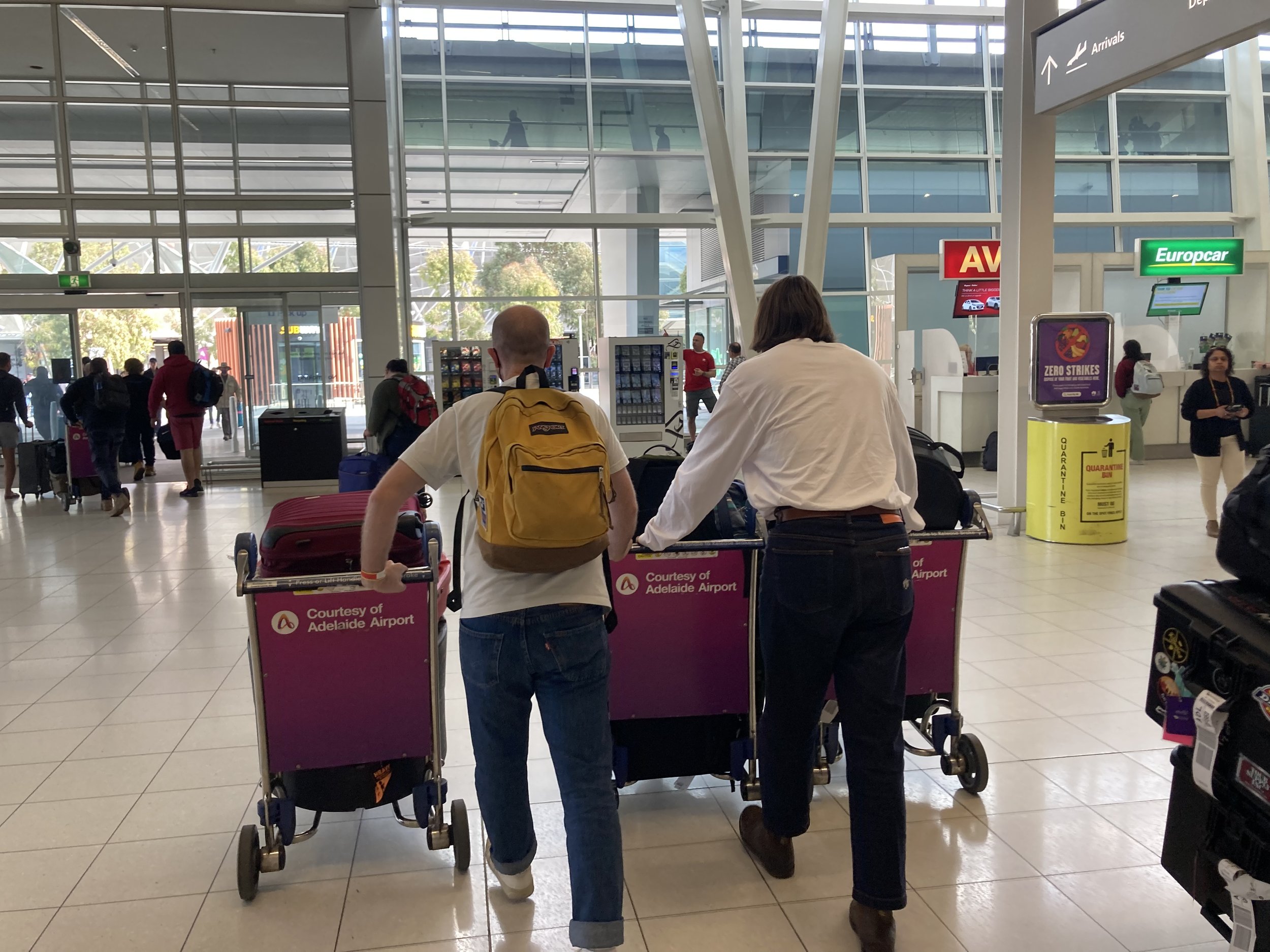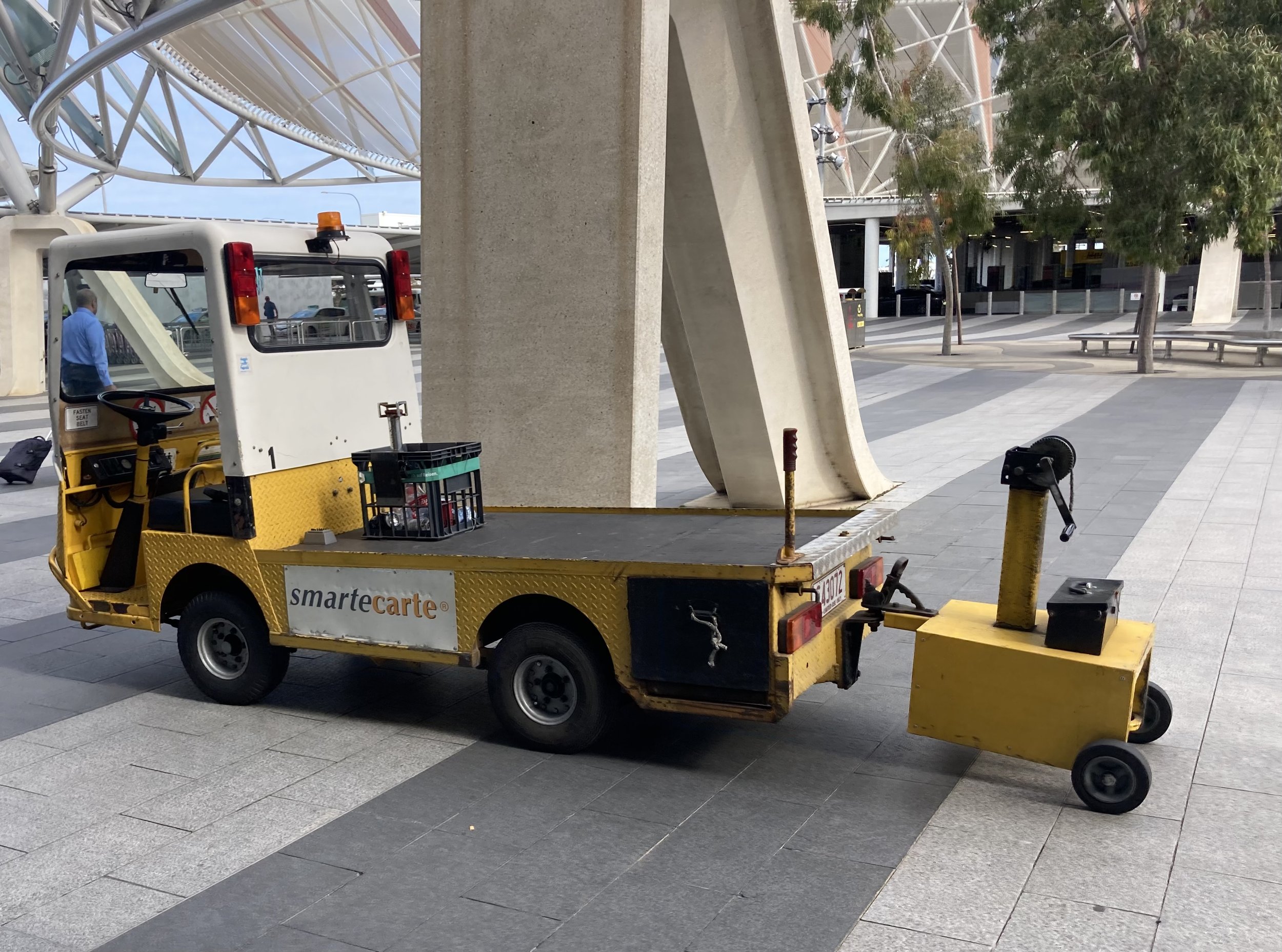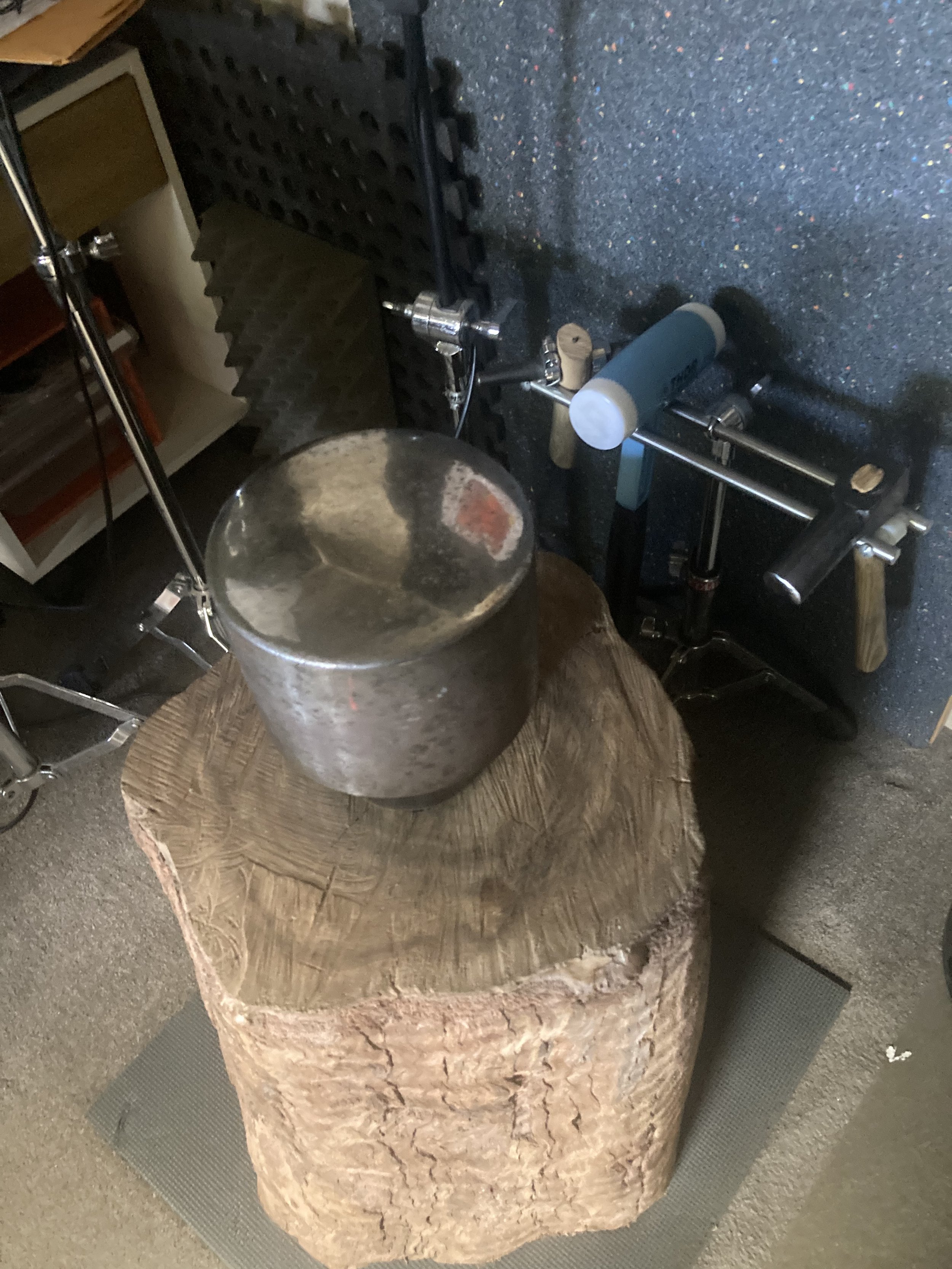Day 5: Rest day
Nau mai
Inanahi, I te okioki mātou ki Tarndanya, Ahitereiria
At the ungodly hour of 4.15am we departed our hotel for Brisbane Airport, marvelling at how busy the motorway was at this time of the morning. It seemed that everyone was heading to the airport with the check-in queues full when we arrived and a long line for security.
I kai ahau i breakfast tart mō tāku parakuihi served aboard a Qantas waka rererangi, a Boeing 737 800.
The South Australian climate felt fresh after the subtropical warmth of Meeanjin. We grabbed our bags and left the terminal after taking advantage of the free smartecartes® that Adelaide Airport offers, grabbing as many as we could carry.
Heroes of the tour: these guys work behind the scenes to get Adelaide Airport’s free smartecartes® where you need them, when you need them.
Thankfully there was a Kia Carnival waiting for us at the car rental and we went through the familiar process of stacking every item in its assigned place in the cargo bay. Then Tristan drove us to the hotel and we found a lunch spot while we waited for our rooms to free up.
The Adelaide Plains are the traditional lands of the Kaurna People, and Tarndanya is the Kaurna name for the site of Adelaide that lies south of the river Torrens.
The afternoon activity involved driving up into the hills to the east of Tarndanya to meet a man that could help Tristan remedy an unfortunate tragedy that had befallen one of his cymbals. Craig Lauritsen is a cymbal smith who creates made-to-order cymbals in his garage in Hawthordene. The process for obtaining a cymbal starts when you email Craig to get on the waiting list. The current wait time is 12 months but has been up to two years at times. When Craig is ready he will ask you to describe the characteristics you would like in your cymbal, and you can provide audio or video examples of other cymbals you like. Then in a couple of weeks you will receive a recording and you can hear it for the first time. If it’s not what you were after Craig can continue to work it, or make another one and sell the first attempt on – there will always be eager buyers.
Craig starts off with Turkish-made bronze blanks that are still warped and covered in impurities from the casting.
The shape of the cymbal is formed on this anvil, inside a soundproof room. The thickness of the metal contributes to the character of the sound and a hammer is an excellent instrument for altering the thickness of the soft bronze.
The cymbal is then lathed to further refine the sound, and clean up the edge.
Tristan, along with a many other Aotearoa drummers, is an avid fan of Craig’s cymbals and has amassed a small collection. In the final week of our recent US tour his favourite ride cymbal had suffered a small crack and this was the perfect opportunity to get it repaired by its maker. Craig drilled two large holes at each end of the crack and then removed the material between them leaving a dog bone-shaped hole. The character of the cymbal was preserved and it can now be safely played again.
We were treated to a good tour of the workshop and Craig showed us some of the experimental cymbals he has made recently with hand-hammered bells, one of which Tristan ended up walking away with.
Craig with the repaired cymbal, and Tristan with his new acquisition.
When we headed back to the city it was late in the day and Tristan and I were both ngenge. Our early morning was catching up and it was too late in the day to take a nap. The only sensible thing was to have an espresso and then a pia, the caffeine, sugar, and alcohol providing us with just enough stimulation to get through the next few hours. We sat at the Belgian Beer Café and enjoyed several varieties of pia witi while I wrote the blog and absorbed Queen Elizabeth II’s funeral playing on the television in the background.
Kupu o te rā is kitā, which means guitar.
Kei te whakatangitangi e Liz I te kitā. Liz is playing the guitar.








